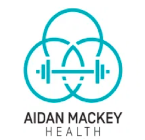“How hung up are you on BMI?”
I was asked this last week whilst having a conversation about target weight loss for improving health and performance.
The question made me think about how I have ‘pooh-poohed’ certain metrics in the past.
So, why would somebody doubt the utility of the Body Mass Index?
Limitations exist when applying the BMI to athletic individuals with high muscularity. It is possible to be under 6-foot-high, over 100kg and be a healthy weight and body fat even though your BMI may be in the overweight category (yours truly as a case in point).
I’m 102kg and approximately 15% body fat.
I would be 86.7kg if I had no fat on my body whatsoever. At my height, I would still have a BMI of 26.7 and be deemed overweight.
Does that mean that anyone who has accumulated a bit of muscle mass is now able to dismiss the BMI?
No.
How many people do you know that have spent 8 years or more of their life almost exclusively trying to be as big and strong as they can possibly be? No less, be as big and strong and reasonably conditioned too. Probably not many.
For most middle-aged men who hung up their rugby boots 15 years ago and taken to the barbell a couple of times a week, there is no stretch of muscle memory long enough to classify you as athletic anymore. Sorry, the BMI is more than likely going to be applicable as a metric.
We also have waist circumference measurements as a great add-on to the BMI, perhaps more useful still if you do have a lot of muscle but maybe not the conditioning.
The more I learn about health from reading the science in the area, the more I realise that being able to maintain a healthy body weight is absolutely key to good long-term health.
A high BMI is associated with a multitude of our most common modern ailments.
Here is the shortlist.
Osteoarthritis –Lohmander et al. (2009)
Reproduction dysfunction–Ramlau-Hansen et al (2007)
Heart Disease (CHD) -Yusuf et al. (2005)
Stroke (CVA) –Suk et al. (2003)
Hypertension –Shihab et al. (2012)
Sleep apnoea & respiratory problems –Peppardet al. (2000)
Dyslipidemia–Bays et al. (2013)
Metabolic syndrome–Després and Lemieux (2006)
Site-specific cancers-Munsell et al. (2014); Terry et al. (2002); Kaakset al. (2002)
Breast, colon/rectal, endometrial
Liver & Gallbladder disease–Radmardet al. (2015); Fabbriniet al. (2010)
Hypertension –Shihabet al. (2012)
Type 2 diabetes –Mokdadet al. (2003)
BMI Classifications – Nice (2014)
| Classification | BMI kg/m² |
| Overweight | 25 –29.9 |
| Obesity 1 | 30 –34.9 |
| Obesity 2 | 35 –39.9 |
| Obesity 3 | ≥ 40 |
As you can imagine, the risks of ill health will scale upwards with the scales. The real kicker is when you get to those higher ranges and see that severely obese people die 8-10yrs sooner than those of ‘normal weight’ –Peeters et al.(2003)
Indicator Cut-off points Risk of Metabolic Complications (Waist Circumference)
| Measurement | Cut off point | Risk |
| Waist circumference | >94 cm (M); >80 cm |
Increased |
| Waist circumference | >102 cm (M); >88 cm |
Substantially increased |
| Waist-hip ratio | ≥0.90 cm (M); ≥0.85 cm |
Substantially increased |
WHO (2011) (M – Men, W – women)
So, I’m not “hung up on the BMI”. I realise that there are a couple of limitations to it but it is a validated and useful metric for classifying associated risks of being overweight (and there are many) and even more valuable used in conjunction with a Waist Circumference,
Global Population (2016) (WHO)
•39% Adults Overweight
•13% Adults Obese
Find your BMI here.

